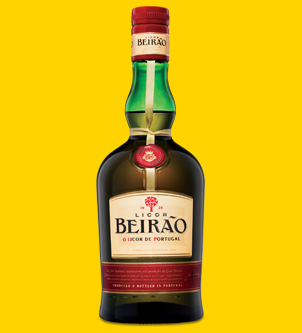
Gin is a distilled alcoholic drink flavoured with juniper berries and other botanical ingredients.

A liqueur is an alcoholic drink composed of spirits and additional flavorings such as sugar, fruits, herbs, and spices. Often served with or after dessert, they are typically heavily sweetened and un-aged beyond a resting period during production, when necessary, for their flavors to mingle.

Anise, also called aniseed or rarely anix, is a flowering plant in the family Apiaceae native to the eastern Mediterranean region and Southwest Asia.
Schnapps or schnaps is a type of alcoholic beverage that may take several forms, including distilled fruit brandies, herbal liqueurs, infusions, and "flavored liqueurs" made by adding fruit syrups, spices, or artificial flavorings to neutral grain spirits.

Pastis is an anise-flavoured spirit and apéritif traditionally from France, typically containing less than 100 g/L sugar and 40–45% ABV.

Anisette, or Anis, is an anise-flavored liqueur that is consumed in most Mediterranean countries. It is colorless and, because it contains sugar, is sweeter than dry anise flavoured spirits. The most traditional style of anisette is that produced by means of distilling aniseed, and is differentiated from those produced by simple maceration by the inclusion of the word distilled on the label. And while Pastis is a similar-tasting liqueur that is prepared in similar fashion and sometimes confused with anisette, it employs a combination of both aniseed and licorice root extracts. Sambuca is essentially an anisette of Italian origin that requires a high minimum (350g/L) sugar content.
Ouzo is a dry anise-flavored aperitif that is widely consumed in Greece. It is made from rectified spirits that have undergone a process of distillation and flavoring. Its taste is similar to other anise liquors like pastis, sambuca, mastika, rakı, and arak.

Chartreuse is a French herbal liqueur available in green and yellow versions that differ in taste and alcohol content. The liqueur has been made by Carthusian monks since 1737 according to instructions set out in a manuscript given to them by François Annibal d'Estrées in 1605. It was named after the monks' Grande Chartreuse monastery, located in the Chartreuse Mountains north of Grenoble. Today the liqueur is produced in their distillery in nearby Aiguenoire. It is composed of distilled alcohol aged with 130 herbs, plants and flowers.
Rakija, rakia, rachiu, rakı or rakiya, is the collective term for fruit spirits popular in the Balkans. The alcohol content of rakia is normally 40% ABV, but home-produced rakia can be stronger.

Pernod is an absinthe produced by Pernod Ricard released in 2005 based on the original Pernod Fils recipe.

Aguardente (Portuguese) or aguardiente (Spanish) is a type of distilled alcoholic spirit that contains between 29% and 60% alcohol by volume (ABV). It is a somewhat generic term that can refer to liquors made from various foods. It originates from and is typically consumed on the Iberian Peninsula and in Iberian America.

Gordon's is a brand of London dry gin first produced in 1769. The top markets for Gordon's are the United Kingdom, the United States and Greece. It is owned by the British spirits company Diageo. It is the world's best-selling London dry gin. Gordon's has been the UK's number one gin since the late 19th century. A 40% ABV version for the North American market is distilled in Canada.
La Fée Absinthe is a brand of absinthe, a highly alcoholic, distilled spirit containing the herb wormwood. La Fée Absinthe was created by Green Utopia, which is owned and run by George Rowley.

Amaro is an Italian herbal liqueur that is commonly consumed as an after-dinner digestif. It usually has a bitter-sweet flavour, sometimes syrupy, and has an alcohol content between 16% and 40%.

Fernet Stock is a herbal bitters made in Plzeň-Božkov, Czech Republic. It is flavoured with approximately 14 herbs, imported from the Mediterranean and the Alps. It is also available in a sweeter form as Fernet Stock Citrus. The original Fernet is approximately 40% alcohol, whereas the Citrus is a lower 30%.

Absinthe is an anise-flavored spirit derived from several plants, including the flowers and leaves of Artemisia absinthium, together with green anise, sweet fennel, and other medicinal and culinary herbs. Historically described as a highly alcoholic spirit, it is 45–74% ABV or 90–148 proof in the US. Absinthe traditionally has a natural green color but may also be colorless. It is commonly referred to in historical literature as la fée verte'the green fairy'. While sometimes casually referred to as a liqueur, absinthe is not traditionally bottled with sugar or sweeteners. Absinthe is traditionally bottled at a high level of alcohol by volume, but it is normally diluted with water before being consumed.

Hierbas is an aniseed-flavored Spanish liqueur served as a digestif.

Italicus Rosolio di Bergamotto is a bergamot rosolio manufactured in Italy. The liqueur uses bergamot from Calabria and citrons from Sicily, along with Italian flower varieties. Italicus was created by an Italian bartender, Giuseppe Gallo, using a family recipe. He launched the spirit commercially in September 2016.

Mallorcan soup or Mallorcan dry soup is a typical dish in the gastronomy of the island of Mallorca. It is a rustic dish, often closer in texture to a casserole or very thick stew. It typically is eaten with a fork rather than a spoon.















